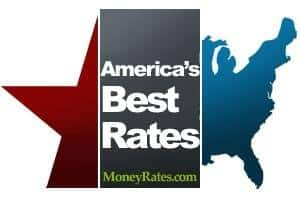America’s Best Rates 1Q 2015 – Savings Account Rates Rise for Some

- The America's Best Rates survey monitors a cross-section of 100 U.S. banks over the course of each calendar quarter.
- The world is always watching to see when the Federal Reserve will start raising or lowering short-term interest rates.
- There are differences in rates offered by large and small banks. but these differences are less drastic than the difference between online and traditional banks.
Savings account rates went in two directions in the first quarter of 2015: The leading banks raised rates while rank-and-file banks lowered them. That’s according to the latest MoneyRates America’s Best Rates survey, a study that measures the levels of savings account and money market account rates in the U.S.
The growing divide between top rates and average rates today makes it critical for consumers to know whether their bank belongs to the category that will likely pay more interest in the months ahead — or the category that may drop rates even further.
The America’s Best Rates survey monitors a cross-section of 100 U.S. banks over each calendar quarter, calculating the average rates those banks offer on savings and money market accounts. This time around, there was some good news for consumers, as the top savings account rates surveyed reached the 1-percent mark for the first time since 2011.
The bad news? Overall, average rates for savings and money market accounts continued to fall. The message then is that higher rates are becoming available, but only consumers who shop actively for rates are likely to find them.
Top savings account rates
Here are the leading banks for savings account rates from the first quarter of 2015, along with their average annual percentage yield (APY) for the quarter:
Going into the quarter, no savings account tracked by this survey had offered as much as 1 percent in interest since 2011. This time, though, three accounts reached that threshold, and conditions generally seem to be getting more competitive among the leading banks, as several of the banks above raised their savings account rates in the first quarter of 2015.
Competition among leaders might lead you to expect savings account rates to improve generally, but this is not yet the case. The average savings account rate in the survey slipped for the second consecutive quarter, this time falling by one-tenth of a basis point to 0.171 percent.
This means the top rate is now more than six times the category average, making this a good time for consumers to refuse to settle for average rates.
Top money market account rates
Here are the leading banks for money market account rates from the first quarter of 2015, along with their average APY for the quarter:
There is a different dynamic among the leading money market accounts tracked by this survey. While several of the leading banks raised their savings account rates, most of the accounts on the money market list stayed unchanged in the first quarter.
At least holding rates steady is better than how money market accounts performed on average. The average money market rate fell for the second consecutive quarter, dropping by seven-tenths of a basis point to 0.158 percent.
Differences among bank types and sizes
The most striking systematic difference in account types is between online-only accounts and traditional, branch-based accounts. The average online-based savings account offered a rate of 0.581 percent, compared to 0.075 percent for traditional accounts. Online choices averaged 0.553 percent among money market accounts, compared to 0.104 percent for traditional accounts. There are exceptions, though, as some traditional accounts were among the leaders in the survey, and some online accounts ranked far back in the pack.
There are also differences in rates offered by banks of different sizes, but these differences are far less consistent and less pronounced than the difference between online and traditional banks. For example, medium-sized banks — those with between $5 billion and $10 billion in deposits — as a group offer the highest savings account rates, with an average of 0.253 percent exceeding both their larger (0.166 percent) and smaller (0.101 percent) counterparts. Among money market accounts, large banks lead the way with an average of 0.177 percent, beating out both medium-sized (0.137 percent) and smaller banks (0.143 percent).
All these developments occur when the world is watching to see when the Federal Reserve will start raising short-term interest rates. The way leading savings accounts rose in the first quarter while the overall average fell suggests that some banks are acting ahead of the Fed while others wait to follow.